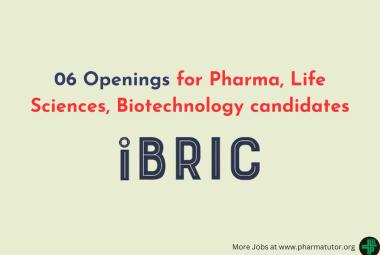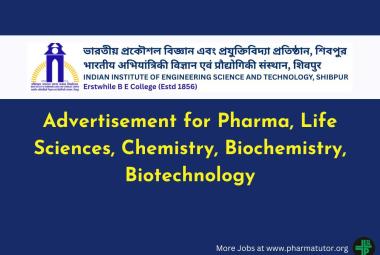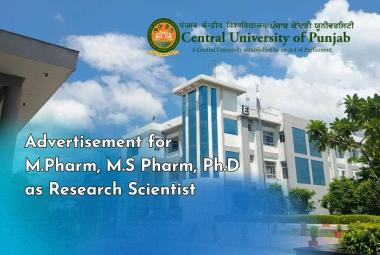{ DOWNLOAD AS PDF }
ABOUT AUTHORS:
*Abdulrhman. A. Akasha, Malak Ali Elwahedi, Areej Mohmoud Eldeeb
Department of Pharmaceutics, Faculty of Pharmacy,
Tripoli University, Libya.
*akashaabdu@yahoo.co.uk
ABSTRACT
Cyclodextrins are formed by the action of cyclodextrin-trans-glycosidase enzyme (CTG) on the medium containing starch. Cyclodextrins are cyclic oligosaccharides containing at least six D-(+)- glucopyranose units attached by α (1-4) glucoside bonds. The three natural cyclodextrins, α , β and γ differ in their ring size and solubility.
One of the striking feature of cyclodextrins is their ability to form inclusion complexes with a variety of compounds, by entrapping their molecules (guest) inside the cyclodextrin cavity, which act as a host. Cyclodextrin complexing agent are often used, in pharmaceutical formulation of oral products, to increase the bioavailability of poorly water soluble or unstable drug. The simplified review presents the evaluation of cyclodextrins drug complexes in pharmaceutical formulation. The preparation of sodium valproate phenytoin sodium/ β-cyclodextrin inclusion complex in a trial to stabilize the drug against moisture absorption and forming non-hygroscopic powders which are suitable for tablets by direct compression was reviewed. The preparation of phenytoin sodium / β-cyclodextrin inclusion complex in a trial to stabilize the drug against moisture absorption and mask its bitter taste was reviewed.
The preparation of piroxicam/ β-cyclodextrin inclusion complexes is a exhibited higher dissolution rates and absorption efficiency values, than the corresponding un-complexes drug.
Cyclodextrins as complexing agents are often used in pharmaceutical formulation of oral products to increase the bioavailability of poorly water soluble or unstable drugs.
INTRODUCTION
Cyclodextrins (cycloamyloses) are a family of compounds made up of sugar molecules bound together in a ring (cyclic oligosaccharides). Cyclodextrins are produced from starch by means of enzymatic conversion. They are used in food, pharmaceutical,(1) drug delivery,(2) and chemical industries, as well as agriculture and environmental engineering. Cyclodextrins, as they are known today, were called "cellulosine" when first described by A. Villiers in 1891. (3) Soon after, F. Schardinger identified the three naturally occurring cyclodextrins -α, -β, and -γ. These compounds were therefore referred to as "Schardinger sugars".
Cyclodextrins are composed of 5 or more α-D-glucopyranoside units linked 1->4, as in amylose (a fragment of starch). The 5-membered macrocycle is not natural. The largest well-characterized cyclodextrin contains 32 1,4-anhydroglucopyranoside units, while as a poorly characterized mixture, at least 150-membered cyclic oligosaccharides are also known. Typical cyclodextrins contain a number of glucose monomers ranging from six to eight units in a ring(4), creating a cone shape:
α -cyclodextrin: 6-membered sugar ring molecule.
β -cyclodextrin: 7-membered sugar ring molecule.
γ -cyclodextrin: 8-membered sugar ring molecule.
A part from these naturally occurring cyclodextrins, many cyclodextrin derivatives have been synthesized. These derivatives usually are produced by aminations, esterifications or etherifications of primary and secondary hydroxyl groups of the cyclodextrins depending on the substituent, the solubility of the cyclodextrin derivatives is usually different that of their parent cyclodextrins.
One of the striking features of cyclodextrin is their ability to form inclusion complex with a variety of compounds, by entrapping their molecules (guest molecules) inside cyclodextrin cavity, which act as host. The minimum requirement for this inclusion complex formation is the fitting of guest molecule entirely, or at least partially, into CyD cavity (5),(6). Inclusion complex formation proceed by an energetically favored interaction of a relatively non polar guest molecule with an imperfectly solvated hydrophobic cavity. The CyD complex thus formed should be stabilized by various intermolecular forces (7),(8).
The safety profiles of the three most common natural cyclodextrins and some of their derivatives has been reviewed (9),(10) In general, the natural cyclodextrins and their hydrophilic derivatives are only able to penetrate lipophilic biological membranes, such as the eye cornea, with considerable difficulty. Even the somewhat lipophilic randomly methylated β–cyclodextrin does not readily permeate lipophilic membranes, although it interacts more readily with membranes than the hydrophilic cyclodextrin derivatives (11).
All toxicity studies have demonstrated that orally administered cyclodextrins are practically non-toxic, due to lack of absorption from the gastrointestinal tract (9) Furthermore, a number of safety evaluations have shown that γ–cyclodextrin, 2-hydroxypropyle-β-cyclodextrin, sulphobutylether β–cyclodextrin, sulphated β–cyclodextrin and maltosyl β–cyclodextrin appear to be safe even when administered parenterally.
The characteristic of cyclodextrins or their derivatives make them suitable for application in pharmaceutical field(12). Cyclodextrin as complexing agent which is often used, in pharmaceutical formulation of oral product, to increase the bioavailability of poorly water soluble or unstable drug (13),(14),(15). Some drugs such as griseofulvin(16), ursodeoxycholic acid (17) showed improvement in their bioavailability caused by increase dissolution rate. However, complexation with cyclodextrins has not been shown to increase the bioavailability of all poorly soluble drugs such as naproxen and tolbutamide. The extant of dissolution of the NSAIDs naproxen (18) and tolbutamide (19) were increased by complexation with cyclodextrin; there was no corresponding increase in bioavailability.
PHARMACEUTICAL APPLICATION OF CYCLODEXTRINS
Sodium Valproate/Betacyclodextrin Complexes:
Sodium valprote is one of the most common antiepileptic drugs for treating partial seizures with and without secondary generalization. It occurs as a hygroscopic crystalline powder which causes problems in the preparation and storage of its solid dosage forms (20).
The aim of this work is to prepare sodium valproate/Betacyclodextrin inclusion complex in a trial to stabilize the drug against moisture absorption (i.e. forming non-hygroscopic powders which are suitable for tabletting by direct compression) (20).
Sodium valproate/Beta-cyclodextrin complexes were successfully prepared using the kneading method and the freeze drying methods at three molar ratios namely 1:0.2, 1:0.5 and 1:1. All the obtained products were fine non-deliquescent powders, as shown in table 1. The co-precipitation method was unsuccessful as no solid product was precipitated even after stirring for 48 hours.
IR spectroscopy, differential scanning calorumentry and x-ray diffraction proved complex formation. The complex prepared at 1:2. A molar ratio was used for the preparation of table by the direct compression technique. The tablets exhibited good mechanical properties, fast disintegration and an acceptable drug content and dissolution profile.
Phenytoin Sodium/Beta-Cyclodextrine Inclusion Complex:
Phenytoin sodium is antiepileptic drug, used to control all form of epilepsy except the absence seizures. It is used for partial and generalized tonic-clonic seizures. Oral phenytoin sodium also affords benefit in the treatment of behavioral disorder. It occurs as a white slightly hygroscopic crystalline powder with bitter soapy taste(20).
This study was aimed to prepare phenytoin sodium/β-cyclodextrin inclusion complex in attempt to stabilize the drug against moisture absorption and mask its bitter taste, Phenytoin sodium β-cyclodextrine inclusion complexes, were successfully prepared using the kneading method at three molar ratios, namely, 2:1, 1:1 and 1:2. The obtained products were non-hygroscopic crystalline fine powders with marked decrease in bitterness, as shown in table 2, 3.
The effect of piroxicam / β-cyclodextrin complex on dissolution rate and drug absorption:
Acute postoperative pain is a common experience in oral surgery practice. Non-steroidal anti-inflammatory drugs (NSAIDs) are quite effective against mild to moderate pain and they are generally better suited in ambulatory outpatients than narcotic analgesics. Piroxicam can be administered once daily because of its long half-life, but its absorption in the gastrointestinal tract is slow as it is its onset of action (21).
Piroxicam-beta-cyclodextrin (PBCD) is a new formulation of piroxicam which is the product of super molecular encapsulation of piroxicam with the cyclic oligosaccharide beta-cyclodextrin.
PBCD is absorbed much faster than standard piroxicam, and its action as an analgesic is consequently more rapid (21).
The purpose of this study was to assess the efficacy and the rapidity of action of piroxicam-beta-cyclodextrin in comparison with standard piroxicam, paracetamol and placebo following surgical extraction of impacted third molars.
Materials and Methods of piroxicam complex:
The study population was composed of 32 patients of both sexes and in good health. To be included into the study, patients must have had third molar removal resulting in acute post-surgical pain of at least moderate intensity. The patients were then randomly assigned to one of four treatment groups. PBCD 20 mg tablets, piroxicam 20 mg capsules, paracetamol 500 mg tablets, or placebo. The study was conducted according to a double-blind, double-dummy design. Pain intensity and pain relief were recorded at 0.5, 1, 1.5, 2, 3, 4 hours after a single dose of the study drugs, by means of a Keele-type rating scale.
Rescue analgesics were not allowed before one and a half hour after taking the study drugs. A global evaluation of study drugs was expressed by patients at the end of the observation period (21).
RESULTS AND DISCUSSION
Cyclodextrins are cyclic oligo saccharides, which are produced from starch by means of enzymatic conversion. Cyclodextrins have many purposes in pharmaceutical field. In this review we focused on the important application of cyclodextrin in pharmaceutical preparation.
- The effect of cyclodextrin to reduce moisture content of drug powder in the formulation of tablets, sometimes the powder would be hygroscopic. Cyclodextrin has the ability to stabilize the drug powder and reduce water content in the powder to be suitable for tabletting. The investigation was amide to reduce the moisture content of sodium valproate to perform the non-hygroscopic powder which is suitable for tablet formulation, as shown in table 1.(20).
Table 1 Moisture content of sodium valporate powder, β-cyclodextrin, by physical mixture and inclusion complexes (20).
|
Moisture content (%) |
Sod.valp: β-CYD (molar ratio) |
Tested sample |
||
|
After one month |
Fresh preparation |
|||
|
2:7 2:5 2:4 |
2:3 1:8 2:1 |
1:02 1:0.5 1:1 |
Sod.valp:β-CYD complexes by freeze drying |
|
|
2:3 2:9 2:4 |
1:9 2:2 2:1 |
1:02 1:0.5 1:1 |
Sod.valp:β-CYD complex by kneading |
|
|
7:4 7:1 6:9 |
5:8 6:7 6:3 |
1:02 1:0.5 1:1 |
Sod.valp:β-CYD physical mixture |
|
|
4:2 |
1:9 |
............... |
Sodium valproate |
|
|
11:1 |
10.5 |
............... |
Beta-cyclodextrin |
|
Furthermore, other study was revealed the effect of cyclodextrins on hygroscopic powder of phenytoin as shown in table 1. Which is also revealed to stabilize the phenytoin to reduce the moisture of drug in powder form(20).
- Preparation and evaluation of cyclodextrin for taste masking, the efficiency of taste masking was evaluated by phenytoin/ betacyclodextrin complex it is was observed that the phenytoin has no bitter taste as showed in table 3. In comparison with mixture of" starch and phenytoin" to "cyclodextrin phenytoin complex", it revealed that cyclodextrins reduce the bitter taste with increase the ratio of cyclodextrin, as shown in table 3. The utilization of cyclodextrin for taste masking of phenytoin as studied and conclusively demonstrated the efficient taste masking of bitter drug taste with complexation evidence (20).
Table 2. Moisture content of the phenytoin sodium/Beta-Cyclodextrin complex within one year, on the exposure to Relative Humidity of 75% at 40°C (20).
|
% Moisture content of |
Storage period (month) |
||
|
Drug complex (2:1) |
Drug complex (1:2) |
Drug complex (1:1) |
|
|
3.98 |
3.21 |
3.52 |
Fresh |
|
4.11 |
3.40 |
3.59 |
1 |
|
3.57 |
3.31 |
3.91 |
3 |
|
3.65 |
3.30 |
3.46 |
6 |
|
3.44 |
3.22 |
3.86 |
9 |
|
3.55 |
3.34 |
3.61 |
12 |
Table 3. The Sensory Test for Phenytoin Sodium, its Starch mixture and its β-cyclodextrine complexes(20).
|
Score of Bitterness Intensities of |
Subject Number |
||||
|
Drug complex (2:1) |
Drug complex (1:2)
|
Drug complex (1:1) |
Drug starch mixture |
Drug Powder |
|
|
0 |
1 |
1 |
1 |
2 |
A |
|
2 |
2 |
1 |
2 |
3 |
B |
|
1 |
1 |
2 |
3 |
2 |
C |
|
1 |
1 |
2 |
2 |
3 |
D |
|
1 |
1 |
2 |
2 |
1 |
E |
|
1 |
1 |
1 |
2 |
3 |
F |
|
1 |
0 |
1 |
2 |
2 |
G |
|
1 |
2 |
1 |
3 |
2 |
H |
|
1 |
1 |
0 |
2 |
3 |
I |
|
1 |
1 |
1 |
2 |
2 |
J |
|
1 ± 0.00 |
1.1 ± 0.10 |
1.2 ±0.16 |
2.1±0.56 |
2.3±0.67 |
Mean±SD |
Indication of score number:
0: No bitter test.
1: Slightly bitter test.
2: Bitter test.
3: very Bitter test.
- The effect of cyclodextrins on the absorption of piroxicam, this investigation was revealed the effect of cyclodextrin on dissolution rate and the absorption of piroxicam.
The fact; that piroxicam has long onset and duration of action, but in formulation of cyclodextrin piroxicam complex the effect start faster and delayed to long duration of action (21).
Treatment groups were homogeneous for demographic characteristics of the patients and for pain intensity at the time of medication with study drugs. All patients who received placebo requested supplemental analgesics, while none of the patients treated with the active drugs needed rescue analgesics.
PBCD and paracetamol were comparable for their analgesic effect, while the time lag before a significant reduction of pain intensity with piroxicam was longer.
Piroxicam and PBCD were superior to paracetamol because they showed a substantial analgesic effect through the 4-hour study duration, while paracetamol did not induce a complete relief from pain.
One of the most commonly utilized models for the evaluation of analgesics is the third molar extraction pain. Our study clearly differentiated between active drugs and placebo. Furthermore, while PBCD and paracetamol showed a rapid effect, piroxicam was slow in inducing pain relief.
The analgesic and anti-inflammatory activity of PBCD and piroxicam brought about the resolution of pain and inflammation consequent to the dental extraction.
Paracetamol, a pure analgesic, was not equally active and pain persisted, even if at a low grade, throughout the observation period; probably this was due to local inflammation and edema. The results of our study appear to confirm the pharmacokinetic data on PBCD, which showed that therapeutic blood levels are reached faster with PBCD than with the standard piroxicam formulation.
CONCLUSION
From this review, we can give more attention on the purpose of cyclodextrin in the pharmaceutical formulation. This application of cyclodextrin valuable to reduce numerous problems of the drug nature; as hygroscopicity, organolipitic problems (taste) and other physicochemical problems.
REFERNECES
1. Menuel S, Joly JP, Courcot B, Elysée J, Ghermani NE, Marsua A, Synthesis and inclusion ability of a bis-β-cyclodextrin pseudo-cryptand towards Busulfan anticancer agent. J.tet, 2006; 67 (7) :1706-1714.
2. Thatiparti TR, Shoffstall AJ, von Recum, HA, Cyclodextrin-based device coatings for affinity-based release of antibiotics. Biomaterials, 2010; 31: 2335-47.
3. O'Mahony AM1, Cronin MF, McMahon A, Evans JC, Daly K, Darcy R, O'Driscoll CM, Biophysical and structural characterisation of nucleic Acid complexes with modified cyclodextrins using circular dichroism. J Pharm Sci, 2014;103(5):1346-55.
4. Szejtli J, Cyclodextrin Technology. 1988; 1: 277-2314-7.
5. Dass CR, Jessup W, Apolipoprotien A-I. Cyclodextrine and liposomes as potential drugs for the reversal of atherosclerosis. J Pharm Pharmacol, 2000;52:731-61.
6. Hirayama Uekama FK, Cyclodextrins and their Industrial uses, D.Duchene, de Sante, Paris, 1981.
7. Szejtli, J, cyclodextrin technology, Kluwer Academic Publishers, Dordrecht 1988.8. Szejtli, J, cyclodextrins and their inclusion complexes Academiai Kiado, Budapest, 1982.
9. Irie T, Uekama K, Pharmaceutical applications of cyclodextrins and Toxicological issues and safety evaluation. J Pharm.Sci, 1997; 86 :147-62.
10.Thompson DO, Cyclodextrins-enabling excipients: their present and future use in pharmaceuticals. Crit Rev Ther Drug Carrier Syst 1997;14:1-10416. Singh M, Sharma R, Banerjee UC . Biotechnol Adv 2002; 20:341-59 .
11. Szente L . Szejtli J, Kis GL, Spontaneous opalescence of aqueous ?-cyclodextrin solution :complex formation or self -aggregation. J Pharm.Sci,1998; 87:778-81.
12. Singh M, Sharma R, Banerjee UC. Adv.Biotechnol, 2002; 20:341-59
13. Stella VJ, Rajewski, RA, Cyclodextrins ; their function in drug formulation and delivery. pharm.Res, 1997;14:556-567.
14. Rajewski RA, stella VJ, Pharmaceutical applications of cyclodextrins, 2. In vivo drug delivery . J.pharm.Sci,1996; 85: 1142-1169.
15. Szente L, Szejtli J, Highly soluble cyclodextrin derivatives: chemistry , properties, and trends in development . Advanced Drug Delivery Reviews,1999; 36: 17.
16. Santil Kumaran K, Baskaran T, Moorthy MSR, Enhancement of bioavailability of griseofulvin by its complexation with beta-cyclodextrin. Drug, 1998;24: 583-587.
17. Paninia R, Vandelli MA, Forni F, Pradellia G, Salviolia, Improvenment of ursodeoxycholic acid bioavailability by 2-hydroxypropyl-beta-cyclodextrin complexation in healthy volunteers. pharmacol.Res. 1995; 31:205-209.
18. Otero-Espinar S, Anguiano-Igea NG, Gonzalez JL., roxen-b-cyclodextrin inclusion compound. Int. J. Pharm, 1991; 75:37-44.
19. Kedzierewicz C, Zinutti M, Hoffman P, Maincent, Bioavailability study of tolbutamide betacyclodextrin inclusion compounds, solid Bioavaliability study of tolbutamide b- cyclodextrin inclusion compounds, solid dispersions and bulk powder. Int.J.Pharm, 1993; 94:69-74.
20. Aghrbi E, Biopharmaceutical study of antiepileptic drugs. Thesis 2008.
21. Dolci G, Ripari M, Pacifici L, Umile A, Analgesic efficacy and the tolerance for piroxicam-β-cyclodextrin compared to piroxicam, paracetamol and placebo in the treatment of post-extraction dental pain. Int. J. Clin. Pharmacol. Res, 1994; 14(5-6):185-91.
REFERENCE ID: PHARMATUTOR-ART-2209
|
PharmaTutor (ISSN: 2347 - 7881) Volume 2, Issue 7 Received On: 17/05/2014; Accepted On: 22/05/2014; Published On: 01/07/2014How to cite this article: AA Akasha, MA Elwahedi, AM Eldeeb; Cyclodextrins and their Pharmaceutical Applications; PharmaTutor; 2014; 2(7); 40-46 |
NOW YOU CAN ALSO PUBLISH YOUR ARTICLE ONLINE.
SUBMIT YOUR ARTICLE/PROJECT AT articles@pharmatutor.org
Subscribe to Pharmatutor Alerts by Email
FIND OUT MORE ARTICLES AT OUR DATABASE









